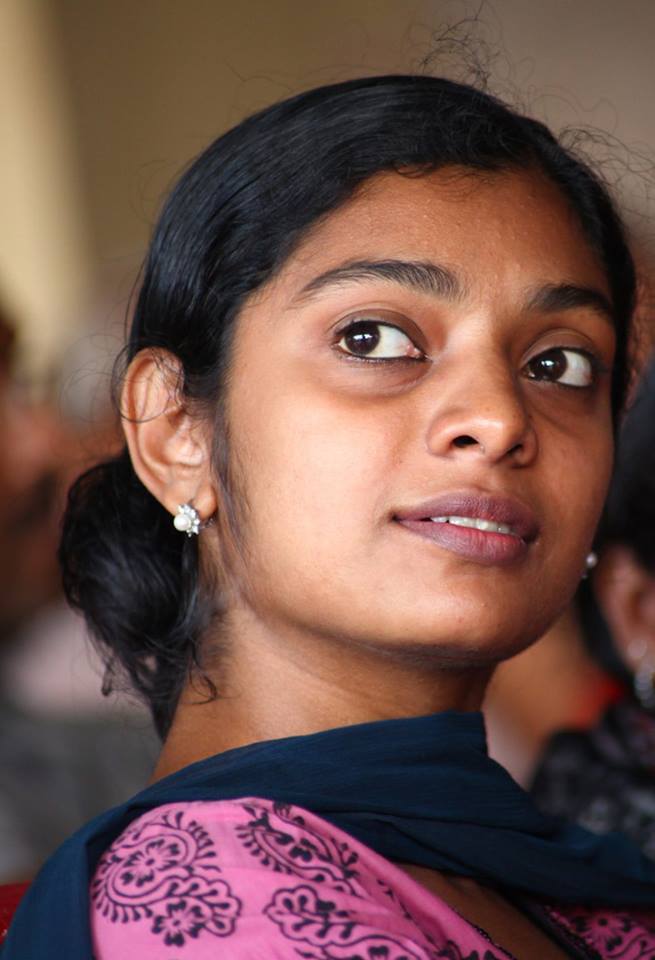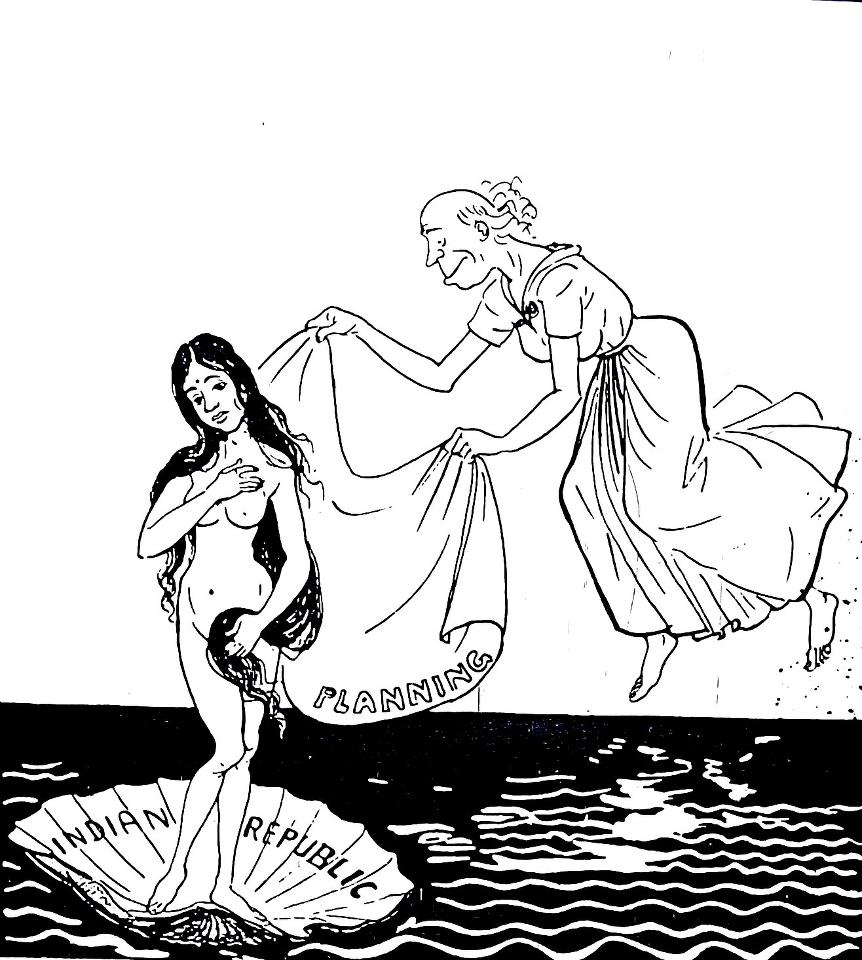Sruthi Herbert
“She is so fair that to look at her, you wouldn’t say she is an SC girl”.
 The ‘Dark is Beautiful’ campaign got a big fillip with its endorsement by Nandita Das, who no doubt, has experienced the bias that the movie industry has against dark-skinned people. One kept having nagging doubts despite generally liking the campaign as it questioned the cultural premium placed on fair skin. So it was a relief to find Anjali Rajoria writing in Savari about why she did not support the campaign. Some of the stingingly ignorant comments, especially one that accuses her of casteism, have provoked me into writing this response.
The ‘Dark is Beautiful’ campaign got a big fillip with its endorsement by Nandita Das, who no doubt, has experienced the bias that the movie industry has against dark-skinned people. One kept having nagging doubts despite generally liking the campaign as it questioned the cultural premium placed on fair skin. So it was a relief to find Anjali Rajoria writing in Savari about why she did not support the campaign. Some of the stingingly ignorant comments, especially one that accuses her of casteism, have provoked me into writing this response.
The website of the ‘Dark is Beautiful‘ campaign states that it “challenges the belief that the value and beauty of people (in India and worldwide), is determined by the fairness of their skin. This belief, shaped by societal attitudes and reinforced by media messages, is corroding the self-worth of countless people, young and old”.
The misgivings one had about this campaign resolved themselves for a good part after reading this. It was problematic for me.
I would like to start by trying to understand the first part: “the campaign challenges the belief that the value and beauty of people (in India and worldwide), is determined by the fairness of their skin”. In India, the ‘value’ of people’ and their ‘beauty’ cannot be so easily and automatically connected. If that were so, then one would not have heard so often that ‘She is so fair that to look at her, one wouldn’t say she is an SC girl”. I am probably just the shade of Nandita Das, may be even a shade darker. And I recall getting a marriage proposal from an upper caste Syrian Christian family who assumed by my looks that I must be a Syrian Christian, (fyi, I am a Latin Catholic, immediately connected in Kerala as descended from the noble fisherfolk although we have left that job at least two generations ago).
This automatic correlation of skin colour with caste is a lived reality for most people in my part of the world. How many factors contribute to the self-worth of women in a society that is structured around many kinds of oppression? To single out skin colour alone as the single most important factor that contributes to self-worth would be, from a sociological view point, a blunder and from the viewpoint of lived experience, a lie.
 I think that for many of us, who are dark-skinned non-‘upper’ caste women, value, beauty, and self-worth are not connected by that single parameter called ‘skin colour’ but more clearly by that single parameter called ‘caste’. I think this is the point Anjali argues by saying that when someone privileged like Nandita Das campaigns that ‘Dark is Beautiful’, her position is more of convenience, one that wants to extend her privileges. The name of the campaign, a play on words uncannily resembling the ‘Black is Beautiful’ campaign, is nothing like the Black is Beautiful campaign which was aimed at addressing the complex intersections of the popular notions of beauty and race. Indeed, ‘Dark is Beautiful’ is a campaign with no political teeth, and except superficially it does not speak to many dark-skinned women like me.
I think that for many of us, who are dark-skinned non-‘upper’ caste women, value, beauty, and self-worth are not connected by that single parameter called ‘skin colour’ but more clearly by that single parameter called ‘caste’. I think this is the point Anjali argues by saying that when someone privileged like Nandita Das campaigns that ‘Dark is Beautiful’, her position is more of convenience, one that wants to extend her privileges. The name of the campaign, a play on words uncannily resembling the ‘Black is Beautiful’ campaign, is nothing like the Black is Beautiful campaign which was aimed at addressing the complex intersections of the popular notions of beauty and race. Indeed, ‘Dark is Beautiful’ is a campaign with no political teeth, and except superficially it does not speak to many dark-skinned women like me.
‘Dark is beautiful’ is simple, in fact, too simple not to have dwelt on the complexity surrounding self-worth, beauty, and skin colour. In fact, beauty or skin colour has hardly the same bearing on self worth on upper caste and non-upper caste women. I have had endless conversations with a close friend about how a very subjective trait like confidence is influenced tremendously by one’s caste, although I am yet to find any work from social psychologists who engage with this topic. If one were only to go by the data on students’ suicides in premier institutes, it is true that caste plays an important role in deciding who gets targeted and who gets broken – not for strength of character, but for lack of positive support – and subjective traits are hugely conditioned by this single reality that determines your identity in this part of the world. I cannot see how self-worth of women is above or beyond this determinant.
I would like to illustrate how ‘dark skin’ and ‘caste’ are linked more organically than what the campaign acknowledges, and how ‘societal attitudes and media messages’ cannot be so easily isolated as to what reinforces the bias towards lighter skin. The South Indian state of Kerala was recently rocked by the ‘Solar Scam‘ in Kerala where the culprits were upper caste, notably two upper caste women. Although, this was not the first, and will not be the last time that women have forayed into criminal territory, the anxieties surrounding this were triggered more by the fact that those implicated were upper caste women, not the ‘kind of women’ whom you would have expected.
This anxiety found its expression most revealingly in the article by the IPS Officer R Sreelekha, where she lamented, ‘Are Karuthammamar on the rise?
The literal translation of Karuthamma is ‘Black woman’, and the allusion she is making is to the heroine in the popular Malayalam novel (and movie) Chemmeen. In this story, Karuthamma is a fisherwoman who dares to love a Muslim man, but marries another man. After the old love is rekindled, the bodies of Karuthamma and her lover wash ashore, both apparently having committed suicide. On the same day, Karuthamma’s husband dies in the sea baiting a shark, thus seemingly validating the belief that a fisherman whose wife strays will perish in the sea. Drawing from this narrative that holds Karuthamma responsible for the tragedy, Sreelekha IPS thinks such women are on the rise, such women in whose hands the family’s welfare and the society’s future are not safe. The casteism in her associating criminality naturally with ‘karuthamma’, the black woman, and wondering whether they were on the rise, even as those implicated in the Solar Scam were fair Nair women, was not lost, was problematised by many in the media, and has been elucidated by A S Ajith Kumar.
 My reason for bringing in this case from Kerala is to illustrate how very easy it is to collapse the categories of women, lower caste, and dark-skinned into a single coherent discourse. When that is not just a real possibility, but an experienced reality, it is foolhardy at best and casteist at worst to ignore the different voices that disagree with a campaign that does not address any of these differences at any level.
My reason for bringing in this case from Kerala is to illustrate how very easy it is to collapse the categories of women, lower caste, and dark-skinned into a single coherent discourse. When that is not just a real possibility, but an experienced reality, it is foolhardy at best and casteist at worst to ignore the different voices that disagree with a campaign that does not address any of these differences at any level.
No, there is no doubt that the commercialization of a cultural preference for light skin colour is a serious problem. Creating space for multiple voices to bring out the complex issues pertaining to skin color was the main point being made in Anjali’s article. I will draw upon Audre Lorde who shed a lot of insight into what rings closest to this ‘Dark is Beautiful’ campaign:
“Institutionalized rejection of difference is an absolute necessity in a profit economy which needs outsiders as surplus people. As members of such an economy, we have all been programmed to respond to the human differences between us with fear and loathing and to handle that difference in one of three ways: ignore it, and if that is not possible, copy it if we think it is dominant, or destroy it if we think it is subordinate. But we have no patterns for relating across our human differences as equals. As a result, those differences have been misnamed and misused in the service of separation and confusion.”*
Reading the intolerant responses to Rajoria’s article which had maintained a respectful and dignified tone, I cannot help thinking how we have no patterns for relating, across our human differences, as equals. I wish, most of all, that she would not be accused of casteism. I wish there were spaces for such articulations that will not be violently attacked. In the absence of this, an upper caste-led campaign to address the profit-based economic order will not dismantle any existing structures. Until such spaces are allowed to exist, and such possibilities for respectful conversation, listening, and learning are not valued and fostered, it would be as Audre Lorde puts it: “The master’s tools will never dismantle the master’s house”.
~
*Audre Lorde, “Age, Race, Class and Sex: Women Redefining Difference“, Paper delivered at the Copeland Colloquium, Amherst College, April 1980 available at www.clc.wvu.edu/r/download/29781
~~~
Sruthi Herbert is a researcher who seeks to interpret the Indian society from the vantage point of the oppressed and the underprivileged. She is starting her doctoral degree in the School of Oriental and African Studies, University of London, and has previously studied at the Tata Institute of Social Sciences, Mumbai, and the Centre for Development Studies, Thiruvananthapuram.
Cartoon by Unnamati Syama Sundar.










